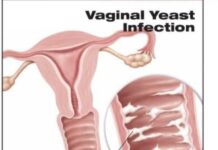What does Komodo dragon eat in the wild?
Komodo dragons typically have gray-brown or reddish-brown skin with a rough texture, which can make them appear somewhat dull in color. The colour is uniform all through, no pattern, no dots or rosettes. Komodo dragons are predator large lizards.
What does Komodo dragon eat?
The young of Komodo dragons called hatchlings feed on small lizard, snake, insects(beetles and grasshoppers) and even birds.
The adult of Komodo dragons eat anything meat including animal carcases. Adult Komodo dragons eat goat, horses, large deers, snakes, chickens, carrion, pigs, smaller dragons, water buffalo, cow, cattle, large snakes like wild boar, rodents, crocodiles, alligators, and monkeys.

Komodo dragon would also attack and kill a human for food.
The appetite of a Komodo dragons matches its size. They can eat 80 percent of their weight in one sitting.
Komodo dragons are carnivores. Eating meat is their favorite food.
The bite of Komodo dragons is highly venomous which they use to weaken, slow down and ultimately kills their prey.
Four things actually help Komodo dragons in their digestion.
1. Time
2. Sunlight
3. Stomach acid
4. Intestinal bacteria
A full meal like the one in the image attached may take four weeks to digest. So, it’s not like they eat every day or every other day. This gives their digestive system enough time to work on it.
During the digestion process, they will bask in the sun a lot. This sunbathing ritual serves a dual purpose in aiding their digestion. Firstly, it harnesses the sun’s warmth to stimulate their cold-blooded metabolism, ensuring an efficient breakdown of their meal. Secondly, it accelerates the decomposition of the ingested food.
Now to the stomach, they have strong stomach acid of pH 2 or 1. This very strong stomach acid stomach helps in breaking down the proteins and other components of the prey. This strong stomach acid also helps to kill any potential bacteria that may be present on the prey, thereby reducing the risk of infection.
Then comes the intestinal bacteria which work synergistically with the stomach acid. These beneficial bacteria in their gut help break down complex molecules, allowing the komodo dragon to derive additional nutrients from its prey.
However, not everything can be fully digested. There are parts, such as bones, fur, and hooves, that resist the digestive process. To deal with these indigestible remnants, the Komodo dragon regurgitates a pellet containing all the components it couldn’t break down. This pellet typically consists of these unassimilated parts and is a unique aspect of their digestive system, shedding light on the intricate workings of these magnificent creatures.
Contributions by Arojinle.























